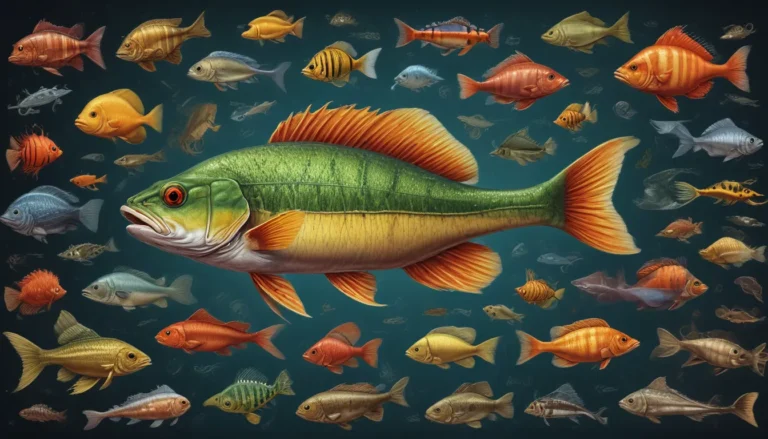A Note About Images: The images used in our articles are for illustration purposes only and may not exactly match the content. They are meant to engage readers, but the text should be relied upon for accurate information.
Welcome to the captivating realm of paleoclimatology, where ancient climates hold the key to unlocking the mysteries of our planet’s past. Through meticulous examination of geological records, fossils, and proxy indicators, scientists piece together the intricate story of Earth’s climatic evolution. Join us on a journey through time as we explore the enigmatic facts that shed light on the Earth’s climatic variations throughout history. Get ready to delve into the fascinating world of paleoclimatology and unearth the secrets of our planet’s climate past!
Decoding Earth’s Climate Puzzle
- Paleoclimatology Essentials: Using ancient ice, fossils, and sediments, this field unveils past climates, aiding in predicting future climate change and understanding the impact of greenhouse gases. It’s akin to solving Earth’s climate history puzzle!
- Climate Detective Work: By analyzing tree rings, pollen, and volcanic eruptions, paleoclimatology uncovers climate anomalies like the Ice Age and Medieval Warm Period. It’s like being a climate detective, solving mysteries of the past!
Diving Deep into Paleoclimatology
The Oldest Ice Core Unveils Earth’s Past
Paleoclimatologists have unearthed ice cores in Antarctica that date back an astonishing 2.7 million years, providing valuable insights into Earth’s climate history. These ancient ice cores help scientists study long-term climate patterns and understand ancient climates.
Fossils: Window to Past Climates
Fossils found in sedimentary rock formations offer vital clues about past climates. By studying ancient plant and animal remains, scientists can reconstruct past ecosystems, vegetation types, and fauna present during different time periods, painting a vivid picture of past climates.
Younger Dryas: A Tale of Abrupt Climate Shifts
The Younger Dryas period, around 12,900 to 11,700 years ago, brought sudden near-glacial conditions after a warming period. This abrupt climate change had far-reaching impacts on ecosystems and human populations, leading to the extinction of various large mammal species.
Predicting Tomorrow Through Yesterday
Studying past climate change events allows paleoclimatologists to refine climate models and make more accurate predictions about future climate change. This knowledge is crucial for developing strategies to mitigate the impacts of global warming and safeguard our planet’s future.
Unveiling Earth’s Climate History Through Various Lenses
Ocean Sediments: Time Capsules of Ancient Climates
Sediment cores extracted from the ocean floor contain organic layers that hold clues about past climates. By analyzing these sediments, scientists can unravel temperature fluctuations, oceanic circulation patterns, and historical greenhouse gas levels, providing a window into Earth’s climate evolution.
Ice Age: The Dance of Glaciation Cycles
The Earth’s Ice Age was marked by cycles of glaciation, where massive ice sheets covered vast areas of the planet. These glaciation periods alternated with warmer interglacial periods, offering insights into the timing and causes of these climatic fluctuations through paleoclimatological studies.
Pollen Analysis: Echoes of Vegetation Changes
Preserved pollen in sediment cores serves as a valuable tool for reconstructing past vegetation distributions and changes in plant communities. This analysis helps scientists understand how climate change has influenced vegetation patterns over millennia, providing a glimpse into Earth’s ancient landscapes.
Unpacking Volcanic Impact on Climate
Volcanic eruptions play a significant role in shaping Earth’s climate. When volcanoes release ash and gases into the atmosphere, they can cause temporary cooling by blocking sunlight. Paleoclimatology enables researchers to study the effects of past volcanic eruptions on climate and their role in shaping Earth’s climatic history.
Anomalies in Climate: Medieval Warm Period & Little Ice Age
The Medieval Warm Period (950-1250 AD) and the Little Ice Age (1300-1850 AD) were periods of significant climate anomalies. The former saw warmer temperatures in specific regions, while the latter brought colder temperatures and extreme weather events to many parts of the world, leaving lasting impacts on ecosystems.
Insights from Paleoclimatology: Unlocking Earth’s Climate Code
Oxygen Isotope Ratio: A Thermometer of Earth’s Past
The ratio of oxygen isotopes in ice cores and marine sediments serves as a proxy for past temperatures. By analyzing these isotopes, paleoclimatologists can reconstruct temperature changes over millennia, gaining deeper insights into Earth’s climatic fluctuations.
Tree Rings: Nature’s Timekeepers
The width and characteristics of tree rings offer valuable insights into past climate variability. Dendrochronology, the study of tree rings, allows scientists to reconstruct rainfall patterns, temperature variations, and other climate trends, creating a detailed timeline of past climates and environmental conditions.
Greenhouse Gases: Past Guardians of Earth’s Climate
Studying periods with elevated greenhouse gas concentrations in Earth’s history enables paleoclimatologists to gauge the impact of these gases on the planet’s climate. This knowledge is essential for understanding the current and future implications of human-induced climate change and guiding mitigation strategies.
Multifaceted Approach of Paleoclimatology
Paleoclimatology relies on a variety of proxy data sources, including ice cores, sediment cores, tree rings, and fossil records, to reconstruct past climates comprehensively. By integrating and analyzing data from these sources, scientists gain a holistic view of Earth’s climate history, enriching our understanding of the planet’s climatic evolution.
Embracing Earth’s Dynamic Climate Past
In conclusion, paleoclimatology offers a fascinating window into Earth’s climate history, unveiling crucial insights into our planet’s evolution over millennia. By unraveling the mysteries of ancient climates and connecting them to present-day trends, scientists pave the way for informed decision-making and impactful climate action. Let the enigmatic facts of paleoclimatology inspire you to explore further and deepen your understanding of Earth’s dynamic climate past.
FAQs: Your Gateway to Curiosity
- What is paleoclimatology?: Paleoclimatology is the study of Earth’s past climate, utilizing various proxy indicators to reconstruct climate patterns and understand long-term changes.
- Why is paleoclimatology important?: Paleoclimatology provides vital information about past climate fluctuations, aiding in distinguishing natural variability from human-induced climate change.
- How do scientists study paleoclimatology?: Scientists analyze proxy indicators like ice cores, sediment samples, tree rings, and fossil records to piece together past climate conditions.
- What are some key findings in paleoclimatology?: Key findings include past ice ages, the correlation between greenhouse gases and temperature changes, the role of volcanic eruptions in global climate, and the influence of ocean currents on climate patterns.
- How does paleoclimatology aid in understanding current climate change?: By comparing current climate trends to past data, scientists can discern the natural variability versus human-induced climate change, guiding climate action and mitigation efforts.
Embark on a journey through Earth’s climatic past, exploring the wonders of paleoclimatology and uncovering the secrets of our planet’s dynamic climate history. Let your curiosity lead the way as you delve into the depths of Earth’s ancient climates and discover the interconnected stories etched in geological records, fossils, and proxy indicators. Join us in unlocking the enigmatic facts of paleoclimatology and embracing Earth’s ever-evolving climate narrative.





